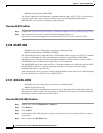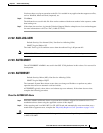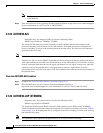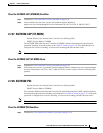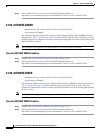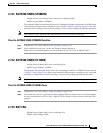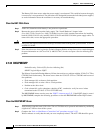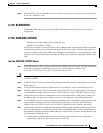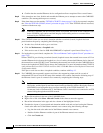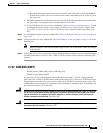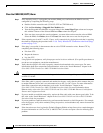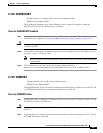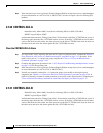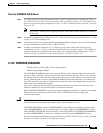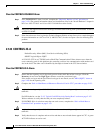
2-34
Cisco ONS 15310-CL and Cisco ONS 15310-MA Troubleshooting Guide, R7.0
Chapter 2 Alarm Troubleshooting
2.7.36 CARLOSS (CE100T)
b. Confirm that the attached Ethernet device configuration allows reception of flow control frames.
Step 8 If the alarm does not clear, disable and reenable the Ethernet port to attempt to remove the CARLOSS
condition. (The autonegotiation process restarts.)
Step 9 If the alarm does not clear and the “TPTFAIL (CE100T)” alarm on page 2-140 is also reported, complete
the “Clear the TPTFAIL (CE100T) Alarm” procedure on page 2-141. If the TPTFAIL alarm is not raised,
continue with the next step.
Note When the CARLOSS and the TPTFAIL alarms are reported, the reason for the condition could
be the CE100T-8 card's end-to-end link integrity feature taking action on a remote failure
indicated by the TPTFAIL alarm.
Step 10 If the TPTFAIL alarm was not raised, determine whether a terminal (inward) loopback has been
provisioned on the port by completing the following steps:
a. In node view, click the card to go to card view.
b. Click the Maintenance > Loopback tabs.
c. If the service state is listed as OOS-MA,LPBK&MT, a loopback is provisioned. Go to Step 11.
Step 11 If a loopback was provisioned, complete the “Clear an Ethernet Card Loopback Circuit” procedure on
page 2-157.
On the CE100T-8, provisioning a terminal (inward) loopback causes the transmit laser to turn off. If an
attached Ethernet device detects the loopback as a loss of carrier, the attached Ethernet device shuts off
the transmit laser to the CE100T-8 card. Terminating the transmit laser could raise the CARLOSS alarm
because the loopbacked CE100T-8 port detects the termination. For more information about CE100T-8
cards, refer to the Cisco ONS 15310-CL and Cisco ONS 15310-MA Ethernet Card Software Feature and
Configuration Guide.
If the port or card does not have a loopback condition, continue with Step 12.
Step 12 If a CARLOSS alarm repeatedly appears and clears, the reappearing alarm could be a result of
mismatched STS circuit sizes in the setup of the manual cross-connect. Perform the following steps if
the Ethernet circuit is part of a manual cross-connect by completing the following steps:
Note An Ethernet manual cross-connect is used when another vendor’s equipment sits between
ONS nodes, and the Open System Interconnection/Target Identifier Address Resolution Protocol
(OSI/TARP)-based equipment does not allow tunneling of the TCP/IP-based DCC. To
circumvent a lack of continuous DCC, the Ethernet circuit is manually cross connected to an STS
channel riding through the non-ONS network.
a. Right-click anywhere in the row of the CARLOSS alarm.
b. Right-click or left-click Select Affected Circuits in the shortcut menu that appears.
c. Record the information in the type and size columns of the highlighted circuit.
d. Examine the layout of your network and determine which node and card are hosting the Ethernet
circuit at the other end of the Ethernet manual cross-connect using the following substeps:
• Log into the node at the other end of the Ethernet manual cross-connect.
• Double-click the Ethernet card that is part of the Ethernet manual cross-connect.
• Click the Circuits tab.



